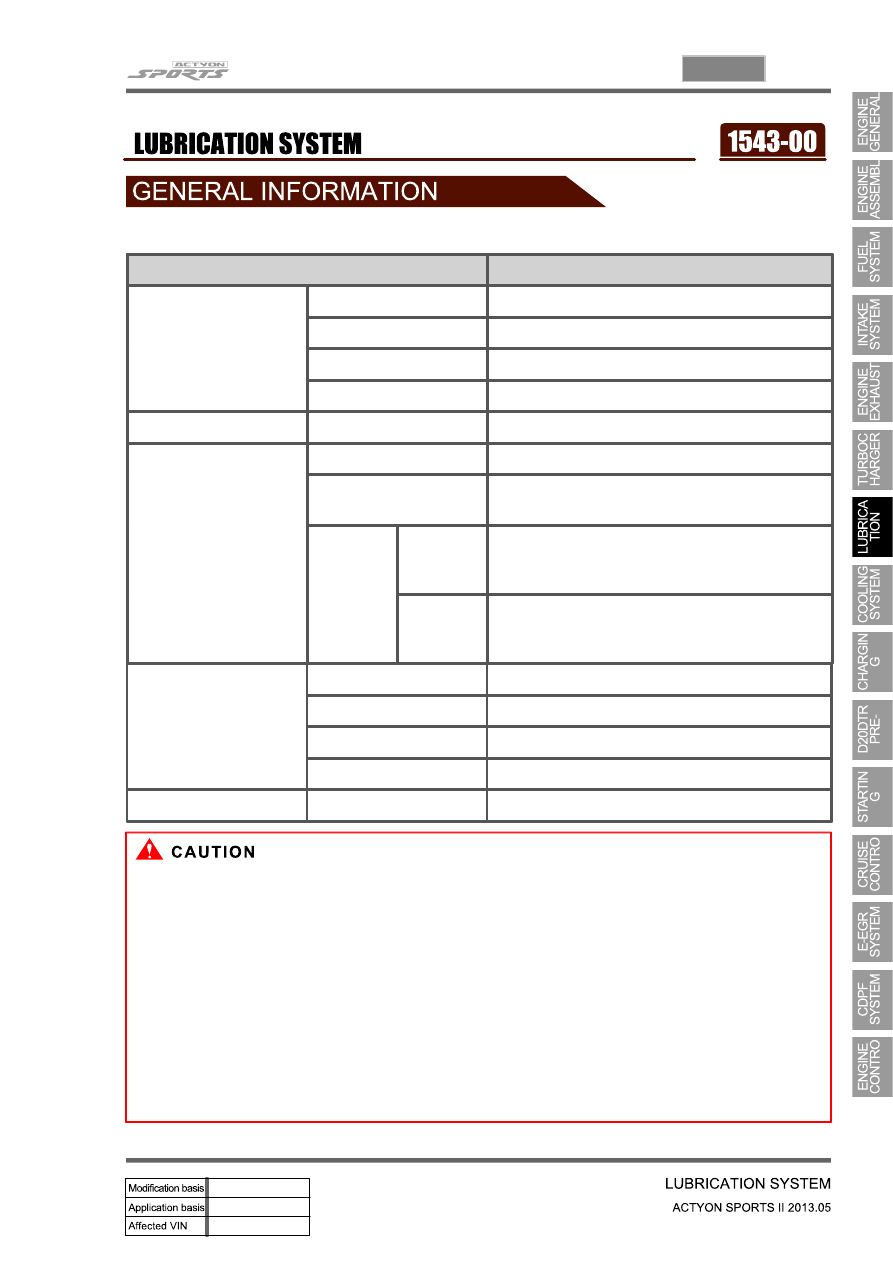SsangYong Actyon Sports II. Manual - part 35

07-3
1543-00
1. SPECIFICATION
The engine oil filter element should be changed at the same time with the engine oil.
Regularly check the engine oil level and add the engine oil if necessary.
Remember to check the engine oil level and shorten the cycle to replace the engine oil under
severe driving conditions.
-
-
Severe Driving Condition
Frequent stop-and-go traffic, extended idling, short driving distance below 6 km, driving distance
below 16 km when the outside temperature remains below freezing
Driving in a hilly or mountainous terrain, sandy, or dusty area
High load driving such as trailer towing
Taxi, patrol service or delivery service (extended idling and excessive driving with low speed)
-
-
-
-
Unit
Specification
Oil pump
Lubrication system
Gear pump, forced circulation
Type
Inscribed gear
Capacity
63 L at 4,000 rpm
Relief pressure
5.8 bar ± 0.3 bar
Oil filter
Type
Full flow/Paper element
Engine oil
Specified oil
SAE 5W30 (approved by MB SHEET 229.51)
Capacity (L)
Min.: 4.5 L
Max.: 6.0 L
Service interval
Change every 15,000 km or 12 months (But,
shorten the service interval under severe
condition)
Oil injection nozzle
Type
Piston
Operating pressure
1.5bar
Closing pressure
1.0bar
Oil flow
4 L/min
Permissible pressure
10bar
Unit
Specification
Oil pump
Lubrication system
Gear pump, forced circulation
Type
Inscribed gear
Capacity
63L@4,000 rpm
Relief pressure
5.8 bar ± 0.3 bar
Oil filter
Type
Full flow/Paper element
Engine oil
Specified oil
SAE 5W30 (approved by MB SHEET 229.51)
Capacity (L)
Min.: 4.5 L
Max.: 6.0 L
Service
interval
EU
Change every 20,000 km or 12 months
(The service interval should be shortened under
severe conditions)
General
Change every 15,000 km or 12 months
(The service interval should be shortened under
severe conditions)
Oil pressure switch